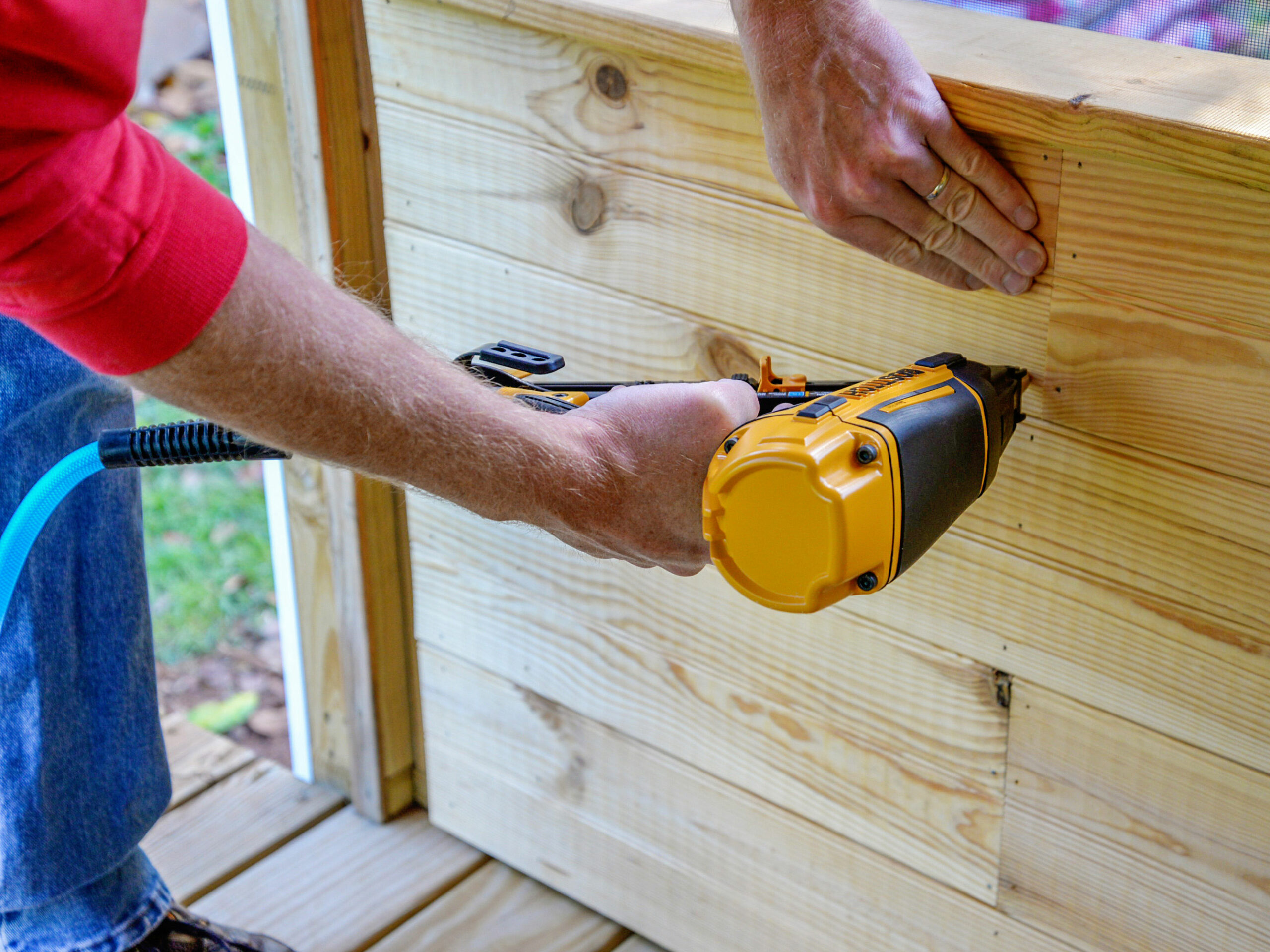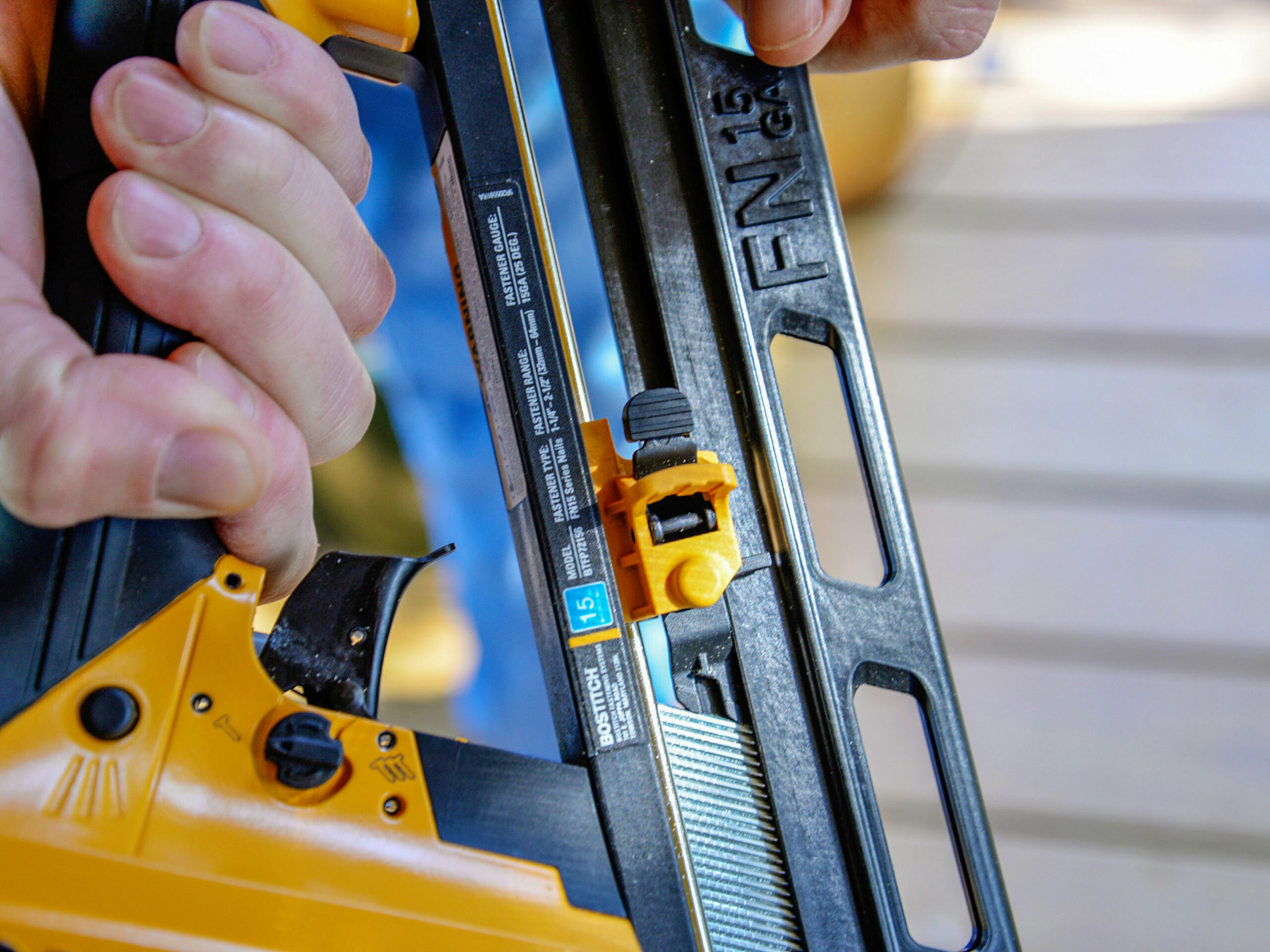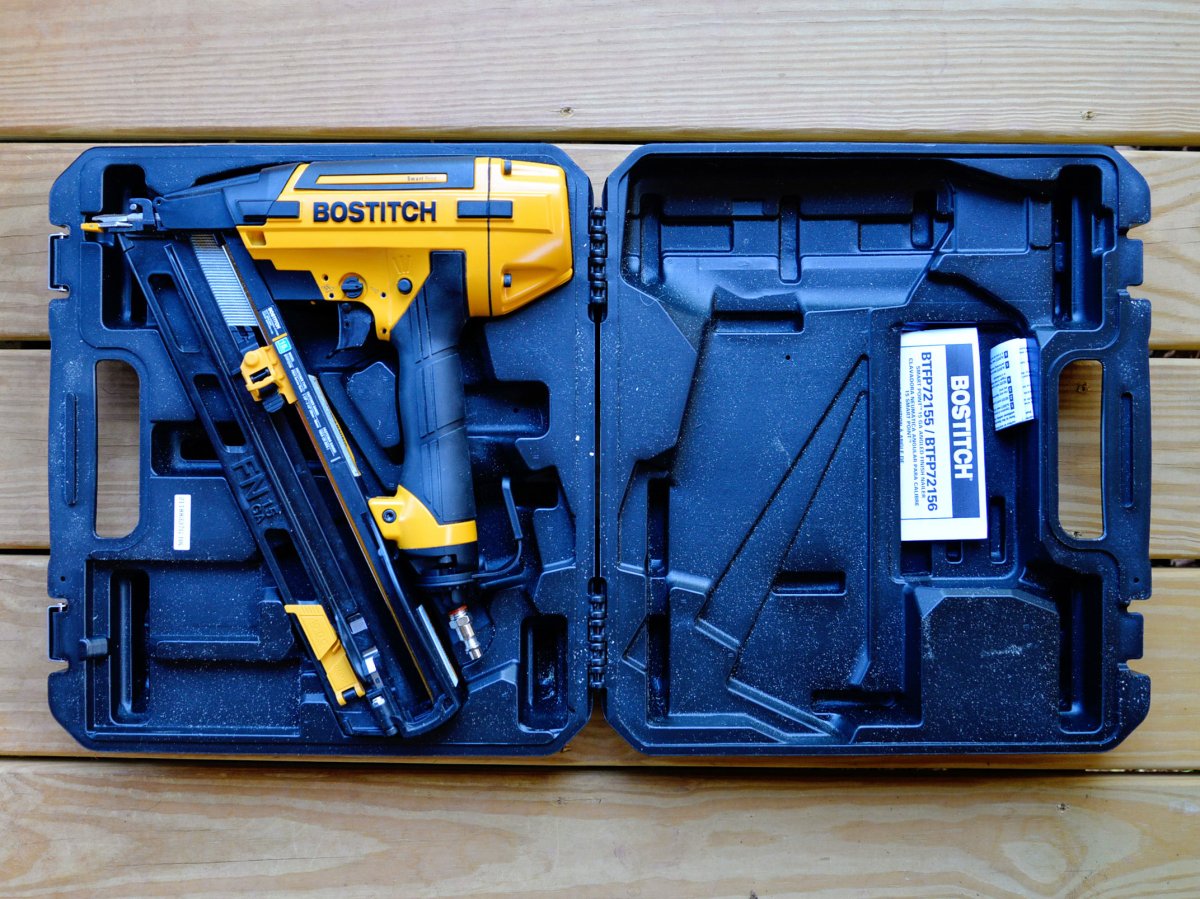We may earn revenue from the products available on this page and participate in affiliate programs. Learn More ›
When I planned to finish the interior of my covered deck with tongue and groove pine, I needed a way to fasten the boards quickly without damaging the board faces. Screws could work, but I didn’t like the thought of all those screw heads showing through. Nailing by hand would take a really long time, and would require more work to keep the boards in place as I nailed. After shopping around and comparing five or six different nail guns, I bought the Bostitch BTFP72156 Smart Point Finish Nailer, and I’m glad I did. Here’s why.
The price was right.
I paid just under $200 for my Bostitch BTFP72156 Smart Point Finish Nailer. The price seemed fair in relation to similar tools with comparable specs. It was a bit higher priced than the Metabo HPT NT65MA4M, and a little lower than the DeWalt DWFP72155. All three angled finish nailers are built to drive 15-gauge nails 1¼ to 2½ inches long and all weigh a little over 4 pounds. Ultimately I chose the Bostitch because it had excellent reviews, and it felt the most comfortable in my hand.
RELATED: Brad Nailer vs. Finish Nailer: Which Power Tool Is Best for Your Project?
I didn’t have to buy a new air compressor.

An air nailer needs an air compressor, but I didn’t need to buy one. I already owned a 6-gallon pancake air compressor, rated 165 pounds per square inch (psi) max, with airflow of 2.6 standard cubic feet per minute (SCFM) at 90 psi. The Bostitch Smart Point Finish Nailer requires 70 to 120 pounds psi, and 1.9 CFM at 80 psi, so it was a good match. The nail gun drives about 60 nails per minute, depending on nail length, drive depth, and hardness of the material I’m working with.
The Bostitch BTFP72156 is lightweight and maneuverable.
Weighing in at 4.32 pounds with no nails loaded, the Bostitch BTFP72156 is one of the lightest finish nailers around. Many competitors weigh more than 6 pounds. The lightweight body, angled magazine, and comfortable grip make it easy to maneuver for hours on end without hand, wrist, or arm fatigue.
It is easy to load.
The Bostitch BTFP72156 angled finish nailer drives 1½-inch to 2½-inch 15-gauge FN finish nails that are glue-collated into sticks of 130 nails each. On big projects, 130 nails don’t go very far, but the nails are easy enough to carry in an apron, and reloading only takes about 5 seconds. Just pull back the nail pusher, slide another nail stick into the back of the magazine, and release the catch so that the pusher engages the nail stick.
It is adjustable for different project needs.

Since finishing my deck, I’ve used the Bostitch Smart Point Finish Nailer to install baseboard trim and to build beehive boxes and a bird house. In addition to driving nails of different lengths, the tool offers a Dial-a-Depth feature that places the nail heads where you want them: proud, flush, or countersunk. It also offers the choice of trigger actuation modes, either sequential (trigger once for each nail) or contact (hold the trigger and tap the nailer tip to the work surface for nailing in rapid succession).
RELATED: 8 Types of Nail Guns You Should Know—and How to Use Them
It comes equipped with numerous convenience features.
Several of the features I overlooked while shopping have proved to be very handy. The replaceable non-marring tip bumper on the Bostitch Smart Point Finish Nailer completely prevents divots and scuffs on the work surface. The belt hook saves time by eliminating the need to lay the tool down while placing the next board. And the built-in air blower and pencil sharpener have been super helpful. I also appreciate that the nailer packs away in its own hard-sided carry case.
It worked great and saved a tremendous amount of time.
When I finally decided to buy the Bostitch Smart Point Finish Nailer, I had high expectations of increasing productivity and reducing wear and tear on my body for completing the deck project. I’m happy to say that both of these have proved to be true.
Each of the boards I installed required 21 nails, averaging 4 hammer strikes and 5 seconds per nail. That’s 84 swings of the hammer and 1 minute 45 seconds per board had I hammered them in manually. The nail gun needed only one squeeze of the trigger and less than 1 second per nail, or about 20 seconds per board—time savings of about 80 percent. With this nailer, I can spend less time bending and stooping with a hammer, finish projects faster, and enjoy the satisfaction of another job well done.


